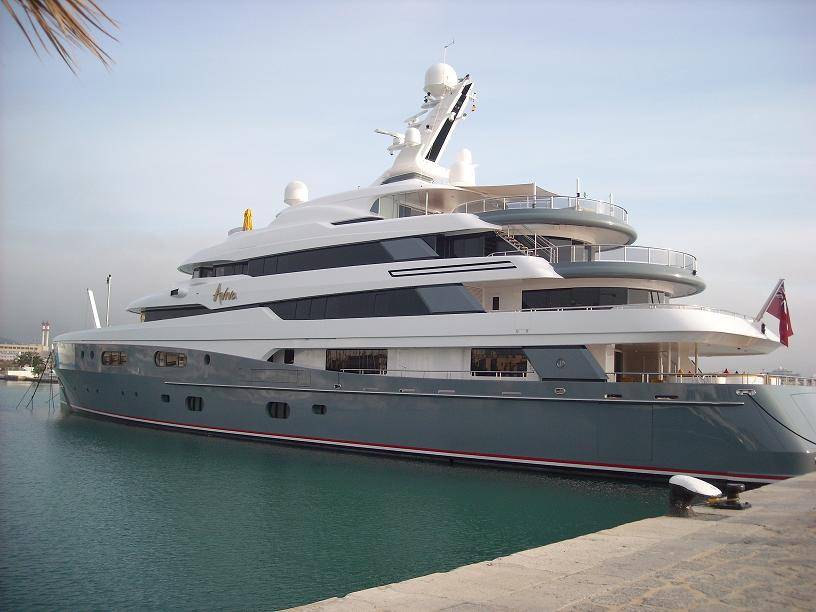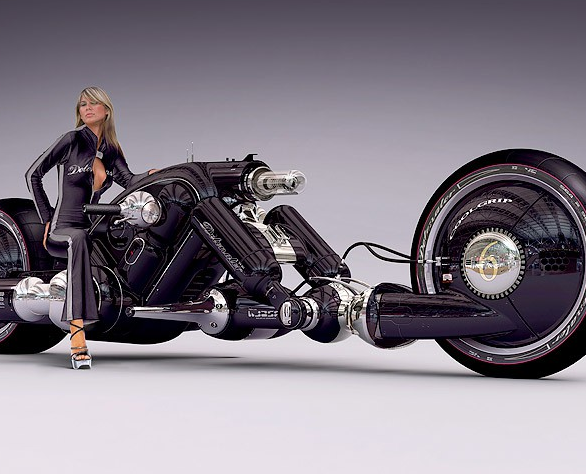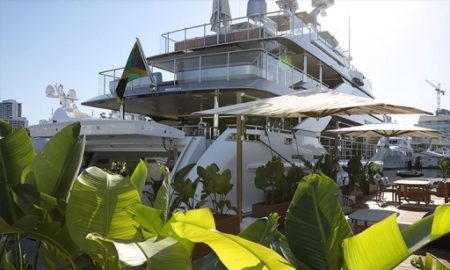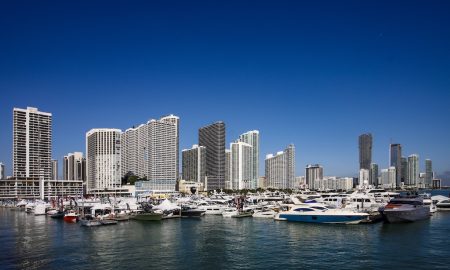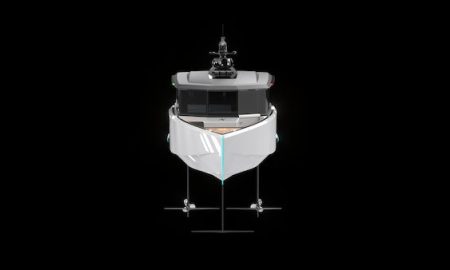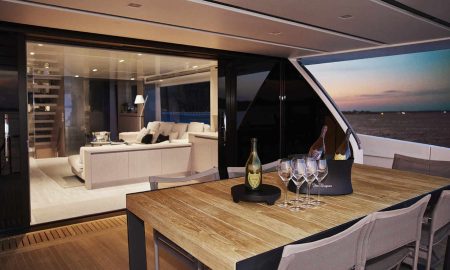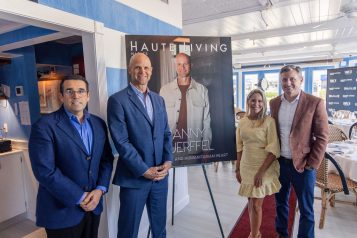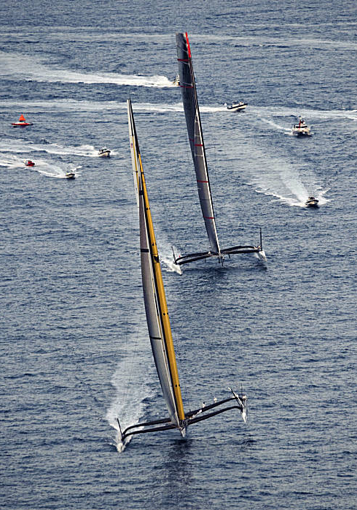
Oracle founder Larry Ellison takes his boat racing very seriously. His team’s entry in last year’s America’s Cup, the USA-17, is actually capable of sailing faster than the prevailing wind. And not just by a narrow margin—2.5 times faster, to be exact.
USA-17 is the specially-built sloop rigged racing sail trimaran (a catamaran with three hulls) launched by the BMW Oracle Racing team that won the 33rd America’s Cup. It’s 90 feet long square at the waterline—about the size of a baseball infield—and displaces 17 tons of water. The USA -17 was designed by VPLP Yacht Design and is constructed primarily out of carbon fiber composite. This makes her exceptionally light and fast for her size. When travelling downwind with a 5-10 knot winds in last year’s America’s Cup, the USA-17 was recorded rocketing along at an astonishing 19 knots.
The hulls are constructed from millimeter-thick carbon epoxy laminated around an ultra-light honeycomb core and then baked in a vacuum chamber within a massive oven for eight hours at 80 degrees Celsius. This results in a hull that is exceptionally strong, stiff, and most importantly, light. And it’s got to be—tight turns can generate as much as 15 tons of torque on the hull.
It’s also designed to cut through waves. The USA-17 has a very narrow bow that’s much less buoyant than the rear of the ship. This forces the hull through, rather than over, the wave which results in a smoother ride and reduces the ship’s resistance through the water.
The USA-17 is propelled by its massive 223-foot tall, 7,700 pound main wing that’s attached a 3.5-ton carbon fiber and Kevlar mast. It’s taller than the Statue of Liberty and larger than any plane wing in existence. This airfoil works just like a plane’s wing, except that it produces horizontal thrust rather than vertical.
The amount of curve in the wing determines how much lift it produces. The mast rotates to control the angle of the wing while nine, two-story tall trailing wing flaps can be independently angled to adjust the wing’s overall curve. These trailing wings form a slotted flap when deflected, much like the flaps on an airplane’s wing which produces more thrust than earlier wingmast/sail combinations. In addition, these flaps can be adjusted to maximize the lift on the wing near the base of the mast and lessening higher up to produce lots of power without a lot of heeling force (which is what causes boats to flip).
In addition, her sails—the mainsail, headsail, and gennaker—have a massive combined surface area of nearly 22,000 square feet.
All of this design means there’re lots of parts that can break. To monitor the stresses and loads placed upon the boat as the crew trains and races, 250 sensors located throughout the hull, mast and sails, beam real-time data to a PDA on the skipper’s wrist.
Source: Gizmodo
Like Haute Living Los Angeles? Join our Facebook page or follow us on Twitter @HauteLivingLA. Want Haute Living Los Angeles delivered to your inbox once a week? Sign up for our newsletter.
Like Haute Living New York? Join our Facebook page or follow us on Twitter @HauteLivingNY. Want Haute Living New York delivered to your inbox once a week? Sign up for our newsletter.







